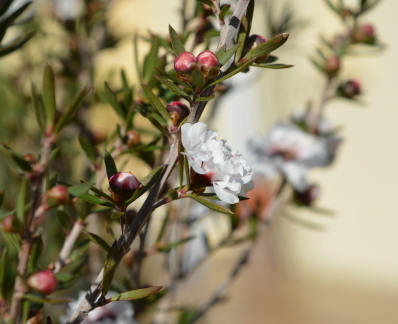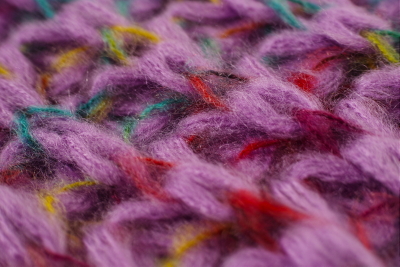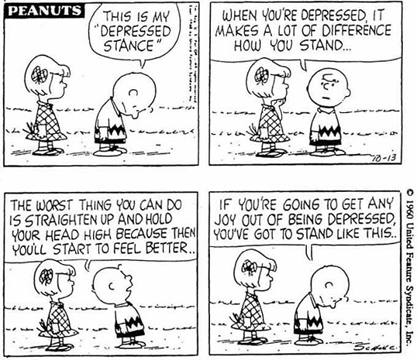
I returned from walking my dog the other day in a such an uplifted, joyous state that it took me by surprise. It was a glorious day, and yes my dog is a delightful happy spirit, but something else had triggered my very bright and buoyant mood.
I realised I had unconsciously been applying three techniques that I teach my psychological coaching clients for building positive, relaxed mood. I was pleasantly reminded just how effective these are, so I’m going to teach them to you quickly today. They are things you can do at any time to shift your mood into a brighter, happier state.
This particular day began with talk about Tea Trees. I keep a variety of colourful Australian native finches (here, if you are interested) and had been chatting with finch-keeping friends about which kinds of brush work best in an aviary. They were all raving about Tea Tree (Leptospermum). It looks good, holds its shape and the birds love it, they said.
So I set out to find a Tea Tree, with one happy Groodle dog in tow.
It was a stunning day. The sky beamed an intensity of blue that only Australian and Greek skies seem to know. The edge had temporarily dropped off the Summer humidity, so the day’s 27C felt positively fresh by comparison with the month prior.
 Armed with some mental images of Tea Tree leaves from a quick Google, I looked, and I looked. Then I looked some more.
Armed with some mental images of Tea Tree leaves from a quick Google, I looked, and I looked. Then I looked some more.
This should be easy, I thought. It’s an Australian native plant and I live in a lush, green area. Not a problem.
But I couldn’t find any. Up this street, down that street, through the park, around the wetlands. Nada.
Eventually, on the final leg of my walk, bingo! A Tea Tree, with branches hanging low.
By this point even my dog was tired. So why did I feel so bright and uplifted?
I believe there were three reasons – or four if we include exercise, though that was not unusual. Here they are:
Presence
You may have heard advice about learning to be “present” or “in the moment”. It’s a hip concept, but actually a very useful one. We are not present when our minds are projecting forward into hypothetical (often anxious) possibilities or plans we’ve made, or arcing backwards into futile could have/should have thoughts.
But life actually happens, of course, only in the tiny conceptual sliver of time we call now.
Provided you are currently breathing, you are always OK right here and now.
So the art, when your thoughts drift off unconstructively into the future or past, is to drag them back and focus your attention on right now. My hunt for Tea Trees had kept my mind focused on each now moment, “Is that a Tea Tree? No. What about that one? How about that one over there?”.
One easy way to start strengthening your now muscle is…
Externalisation of attention, with a side of wonder
Stress or distress of any kind is a very introspective process. Thoughts swirl internally and the real world gets temporarily forgotten.
 The exercise is to consciously bring your attention onto something external and tangible around you. It can be a very simple thing, like studying the weave of the fabric your top is made from, or the way the light trips across the textured brick wall you are standing next to.
The exercise is to consciously bring your attention onto something external and tangible around you. It can be a very simple thing, like studying the weave of the fabric your top is made from, or the way the light trips across the textured brick wall you are standing next to.
It’s about noticing intently.
Add an intentional dose of wonder or appreciation for what you see, and your mood is immediately shifted to the positive.
Tea Tree hunting had automatically externalised my attention, because I was actively looking for something. My gaze was external, and my thoughts were external.
As a result, I noticed so much more than usual in my environment that the whole experience of walking was much richer. I was filled with appreciation for everything I saw.
Posture
If you’ve spent much time with me at all, we will probably have talked about Power Posing. It’s a concept researched and expounded by Professor Amy Cuddy, in which strong, positive physical postures are used to trigger the nervous system into the associated strong, positive mood states. It’s an awesome embodiment technique that works well and very quickly.
Of course, Charlie Brown figured this out long before, as did the rest of us on a subconscious level. It’s the reason we have phrases like “Chin up!” and “Things are looking up”.

For my entire Tea Tree hunt, my chin was high and I was literally looking up. By the time I got home, my chin just didn’t want to come down again.
Try it.
Hi. I’m glad he found shrinkwrap.blog website, I really like
it, the article is very useful and I shared it!
Thanks fоr >Things are looking up <Liked it!
Wow … I think I finally get some of this stuff. I ‘wuv’ the real time example and concepts finally explained with such simplicity and clarity. I think you missed an additional peripheral point – read positive uplifting light hearted stories like this real gem! It certainly made an instant smile of me! Great stuff … keep it coming.
Thank you Joseph :). I’m so glad it hit a spot.